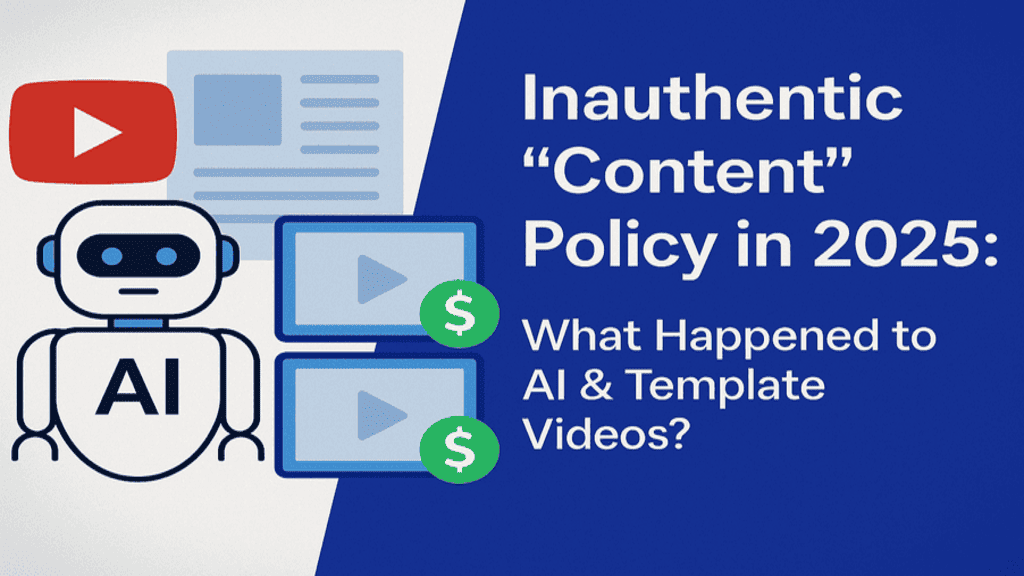What is the Inauthentic Content Policy?
Repetitive vs. Inauthentic - What’s the Difference?
YouTube has had rules about "repetitive content" for years, but they never quite covered modern cases like AI-generated scripts, robotic voiceovers, or template-heavy videos. While Google and YouTube often claim they support "helpful AI content", their enforcement seems to say otherwise.
The new "inauthentic content" policy pushes that contradiction further. It’s no longer just about repeated ideas - YouTube is now paying close attention to the creative value, human input, and how a video feels to the viewer. That means channels producing dozens of templated videos, using TTS voices and stock visuals, or uploading pre-made motivational audio over loops are under serious threat.
How Are AI, Automation, and Templates Affected?
- Text-to-speech (TTS) videos without any real scriptwriting or originality
- Stock footage + on-screen text + AI voiceovers
- Motivational/history/news videos with nearly identical formats
- Automated content farms, including bots posting videos or comments
These types of content have always been risky, but this time YouTube has taken a harder stance. Even if the content is technically useful, if it feels robotic or mass-produced, it’s likely to lose monetization.
Monetization, RPM, and Demonetization Risks
- Even channels that already passed AdSense review may lose income if their videos no longer meet the standards
- Videos may be flagged with "Limited Ads" and get minimal revenue
- RPMs may drop significantly - especially in regions like the US and UK where advertisers are more sensitive
Also worth noting: In the final week of July 2025, YouTube launched a massive channel purge. Millions of accounts were terminated - especially inactive ones or those linked to the same IP/network. This shows that YouTube is now targeting not just the content but the overall structure of creator networks.
How to Produce Content That Actually Works
- If you're using AI, edit the output, rewrite it, and always add your personal insights
- Avoid TTS - use your own voice or a professional narration service
- Even if you don’t appear on camera, add screen recordings, custom visuals, and your own explanations to make it unique
- Instead of using the same template over and over, change it up, customize layouts, and aim for variety
Case Study: How Our Template-Based Channel Lost Revenue
We’ve been there. At one point, we ran a channel where we took AI-written motivational texts, used a TTS voice, stock video backgrounds, and a generic intro/outro. That channel - "Motivation Archive" - reached 100,000 monthly views in late 2024 and earned about $120–150/month.
Then came the July 2025 update. Suddenly, videos were flagged with "Limited Ads", and our RPM dropped below $0.20. We lost over 80% of our income within a week.
This experience made it clear: YouTube’s detection systems are much more sensitive now. If your content feels automated or lacks personality, it’s going to struggle.
Tips for Creators Moving Forward
- If you’re using AI, edit the output carefully and make sure it reflects your voice
- Skip the robot voice - record your own or hire someone real
- Try using different content formats: screen recordings, animations, real-life examples, commentary
- Don’t let your entire channel look the same - rotate templates, styles, and structures
Bottom line: YouTube doesn’t just care about what you say - it cares how you say it.
Creators relying on automation or faceless content will face tougher times ahead unless they adapt quickly.

No comments yet. Be the first to comment!